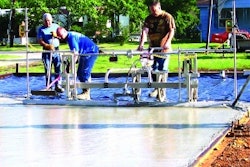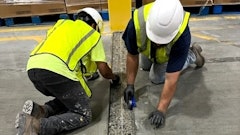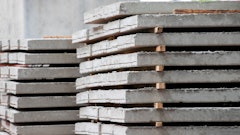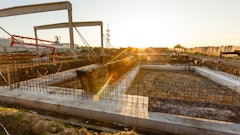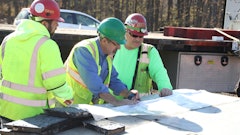Judging from recent legislative actions and proposals, one could conclude that cement and concrete products rank among the greatest evils on the planet in terms of greenhouse gas (GHG) emissions and global warming. Some may not believe global warming is proven or that climate change is man-made, but the increased regulations and restrictions affecting the cement and concrete industries cannot be ignored.
Rather than bemoan these changes, whether climatic or regulatory, we can be proactive. Let's make our case for the environmentally friendly aspects of concrete construction while we educate others on the facts of GHG emissions from cement and concrete production.
Yes, the manufacture of cement, the critical component of concrete, produces significant amounts of carbon dioxide (CO2). But concrete is also green. We must acknowledge both, but put our best foot forward!
The structural benefits of concrete are widely known. What many people don't know is that concrete also:
- reduces motorists' fuel consumption when it replaces asphalt pavement.
- saves energy by reducing commercial and residential electricity consumption by reducing energy demand because of its thermal mass in buildings.
- reduces ambient temperatures through urban "heat island" mitigation when lighter colored surfaces that reflect more sunlight replace dark-colored surfaces.
- accommodates sustainable development practices by incorporating recycled concrete, blast-furnace slag, fly ash and silica fume and other materials destined for a landfill.
- improves drainage and restores water to aquifers with the use of pervious concrete paving.
Detractors to cement production argue that while concrete has its advantages, cement manufacturing requires a lot of energy, often in the form of coal and other fossil fuels. Also, the process emits 0.9 lb. of CO2 for every pound of cement produced, according to the Portland Cement Association.
One upshot of this is California's Global Warming Solutions Act (AB 32) of 2006. Other states are looking at this law as a model for similar legislation. The law's goal is to reduce California's GHG emissions over the next 40 years. Industry leaders believe the legislation could cripple or even kill the cement manufacturing business in California, and other states could follow California's regulatory stance.
However, concrete is the most common construction material worldwide, so the demand for concrete will not diminish; and to create concrete, we must have cement. By limiting domestic manufacturing, cement imports will escalate at greater expense, both economic and environmental, increasing construction costs while eliminating American jobs.
Sadly, the short-sighted approach that reduces domestic cement manufacturing in the most environmentally responsible nation on Earth could actually increase cement's carbon footprint globally. This arises because foreign manufacturers have less efficient production than in California facilities, both in terms of GHG and energy efficiency. Further, there is the "leakage" component in shipment that increases the amount of pollution due to handling and multi-modal transportation. Cement industry officials suggest that when calculating the impact of cement on total GHG emissions, California should consider these global factors, in which case it could be more beneficial to continue manufacturing cement in California.
Cement manufacturers in California have reduced energy consumption by more than 50 percent in the past two decades. In addition, GHG emissions have been reduced through the use of blended cements that contain SCMs such as limestone, slag, silica fume and fly ash. The marketplace has already begun what the new law only contemplates, and the marketplace will continue to provide superior solutions that reduce energy use and control emissions, if we let it work.
In this dire economic climate, if cement and concrete become more expensive to meet GHG emission restrictions, it will cause a ripple effect across the entire economy. We need a reasonable solution that examines all these factors. Although California's AB 32 is fait accompli, its implementation is not. There are mitigating factors being considered, including early action measures that could benefit the cement and concrete industries and be environmentally friendly. AB 32 is likely to be the model for other states, so our input is valuable and can have an impact on the outcome.
You can do your part by becoming involved in the education process, which may be as simple as talking about this to friends and family and within your social and professional networks. If you choose to become more formally involved, which I urge you and your professional organizations to do, contact environmental agency officials as well as elected officials, urging them to examine the issue fully and act accordingly.
For more information and background materials on this important topic, visit the Portland Cement Association (PCA) at www.cement.org or the American Concrete Institute (ACI) at www.green.concrete.org.
Geoffrey D. Hichborn, Sr., PE, is a civil engineer with nearly 30 years of experience in forensic evaluation of cement and concrete materials and related construction. He serves as a Senior Consultant at Concrete Insights Corporation, www.concreteinsights.com. CIC investigates the design, installation, performance and repair of concrete and related materials, providing expert testimony in litigation and specialized consultation. CIC investigators are known as "The Concrete Detectives."





